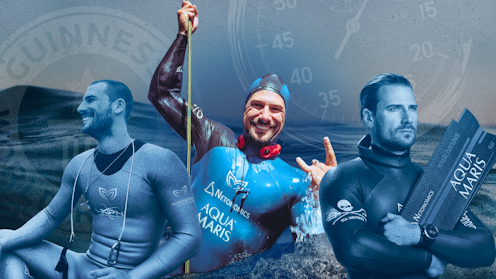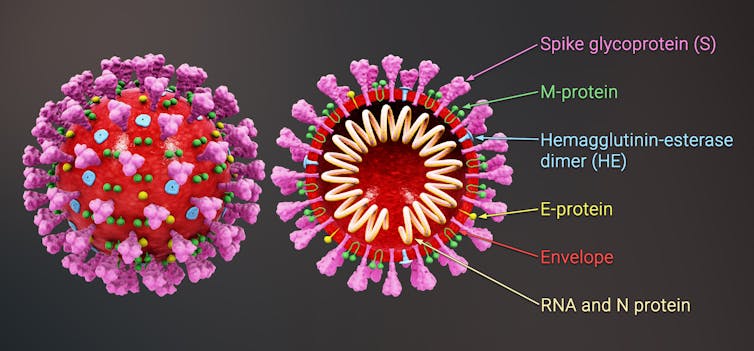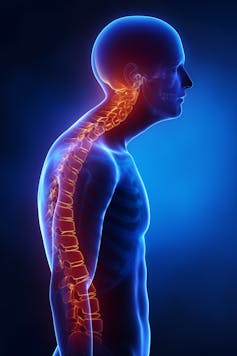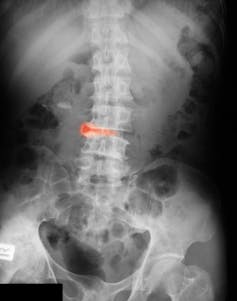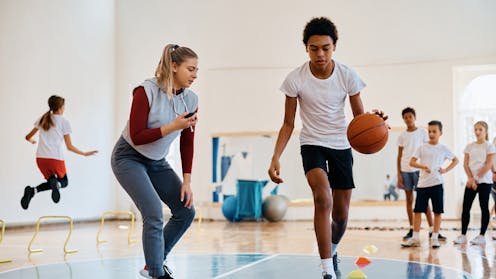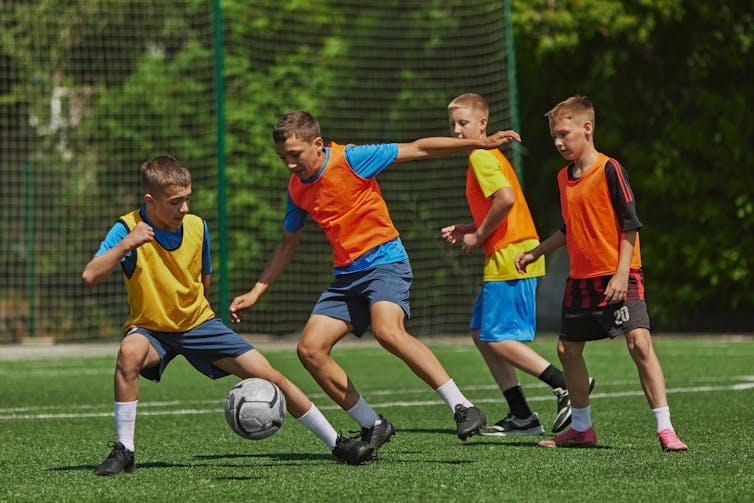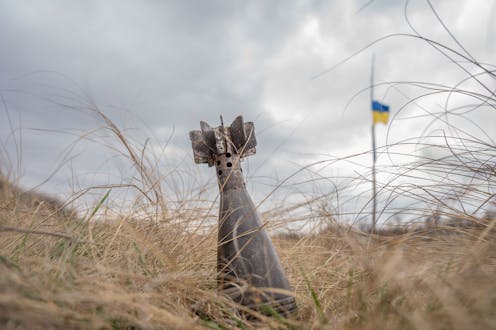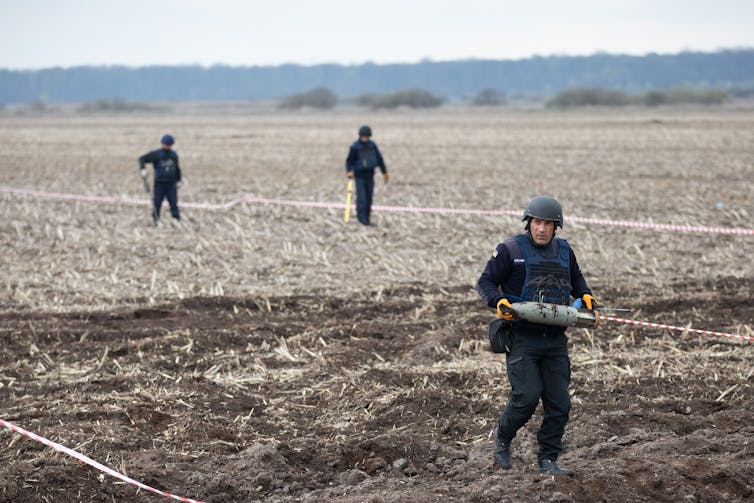Source: The Conversation – Global Perspectives – By Vincent Ho, Associate Professor and Clinical Academic Gastroenterologist, Western Sydney University
Many of us are guilty of scrolling our smartphones on the toilet. But a new study from the United States, published today, has found this habit may increase your risk of developing haemorrhoids by up to 46%.
So, what’s the link? How can time on your phone lead to these painful lumps in and around your anus? Here’s what we know.
What are haemorrhoids?
Every healthy person has haemorrhoids, sometimes called piles. They are columns of cushioned tissue and blood vessels found close to the opening of the anus.

Aleksandr Kharitonov/Getty
Haemorrhoids have a really important role in maintaining bowel continence or, to put it simply, keeping your poo in.
When all is well, we don’t notice them. But haemorrhoids can get swollen and this can lead to symptoms such as pain, bleeding or feeling a lump just inside your anus (internal haemorrhoids) or protruding outside (external haemorrhoids).
So when someone “has haemorrhoids”, it means they have become inflamed or symptomatic.
This is extremely common: more than one in two of us will experience symptomatic haemorrhoids at some point in our lives.
You are more likely to get haemorrhoids if you:
- are older (over 45)
- are pregnant
- are overweight
- have persistent constipation or diarrhoea
- regularly lift heavy objects
- spend a lot of time on the toilet.
The link between toilet time and haemorrhoids
Prolonged sitting in general has not been linked to developing haemorrhoids.
However, a standard toilet seat – unlike a chair or couch – has a large internal opening that provides no support for the pelvic floor (the group of muscles and ligaments that support the bladder, bowel and uterus).
Prolonged sitting on a toilet seat is believed to increase pressure inside the pelvic floor and lead to blood pooling in the vascular cushions of the anus. This makes haemorrhoids more likely to develop.
What the new study looked at
The new US study recruited 125 adults, aged 45 and older, who were undergoing a colonoscopy at Beth Israel Deaconess Medical centre.
Researchers surveyed them about their smartphone habits while using the toilet, including how often they checked their phone and for how long. Participants also reported on other behaviours such as straining, their fibre intake, and how much physical activity they did.
The researchers recorded whether they had haemorrhoids. Since the participants were all having a colonoscopy, the presence of internal haemorrhoids could be directly confirmed visually.
What did the study show?
Two-thirds (66%) of all participants used smartphones while on the toilet. The most common activity was reading news (54.3%), followed by social media (44.4%).
Those who used their smartphones spent longer on the toilet than those who didn’t. More than one in three (37.3%) toilet smartphone users spent over five minutes on the toilet, compared to just over one in 20 (7%) of those who didn’t use their smartphones.
The smartphone users had a 46% higher risk of haemorrhoids, compared to those who didn’t use their smartphone. To calculate this, researchers took into account other known risk factors for haemorrhoids such as gender, age, body mass index, exercise activity, straining and fibre intake.
However, unlike some other research, this study did not find a link between straining and haemorrhoids.
As a result, the researchers concluded that time spent on the toilet poses a more significant risk for haemorrhoids than straining. However, we can’t rule out straining as a risk factor, based on one study.
Some other limitations to consider
The study relied on participants remembering whether or not they strained, and how long they spent on the toilet.
This kind of recall is subjective, and may also be influenced by taking part in the study. For example, if the participants thought they had haemorrhoids, they may be more likely to report straining.
The study’s small sample size and the participants’ age (all over 45) also mean it is unlikely to be representative of the broader population.
Toilet sitting time
The new study is not the first to study the link between time spent on the toilet and developing haemorrhoids. In 2020, a Turkish study found spending more than five minutes on the toilet was associated with haemorrhoids.
Another 2020 study from Italy of 52 people with diagnosed internal or external haemorrhoids noted the longer they spent on the toilet, the more severe their haemorrhoids.
Read more:
Do men really take longer to poo?
So, what are we doing on the toilet?
Defaecation itself usually doesn’t take long. One study found it took healthy adults an average two minutes when sitting, but only 51 seconds when squatting.
The majority of “toilet sitting time” usually means just that – sitting on the toilet, doing other activities aside from pooing (or weeing).
One 2008 study from Israel surveyed 500 adults and found more than half (52.7%) read books or newspapers while on the toilet. It also found toilet readers spent significantly more time on the toilet.
How to avoid haemorrhoids
The usual advice is to increase the amount of fibre in your diet (eating more fruit, vegetables and wholegrains) and ensure you drink enough water. This makes it easier to pass a stool and reduces straining – which you should also try to avoid.
However, the new research confirms previous evidence that cutting down toilet sitting time may also help. So, avoiding distractions by leaving your smartphone outside the bathroom is a good idea (and as a bonus, will expose your device to fewer germs).
Read more:
Your phone is covered in germs: a tech expert explains how to clean it without doing damage
If you have any concerning symptoms, such as blood in your stool, a new lump in the anal region, or pain when passing a bowel motion then you should see your local doctor for further investigations and treatment.
![]()
Vincent Ho does not work for, consult, own shares in or receive funding from any company or organisation that would benefit from this article, and has disclosed no relevant affiliations beyond their academic appointment.
– ref. Scrolling on the toilet increases your risk of haemorrhoids, new study shows – https://theconversation.com/scrolling-on-the-toilet-increases-your-risk-of-haemorrhoids-new-study-shows-264107


